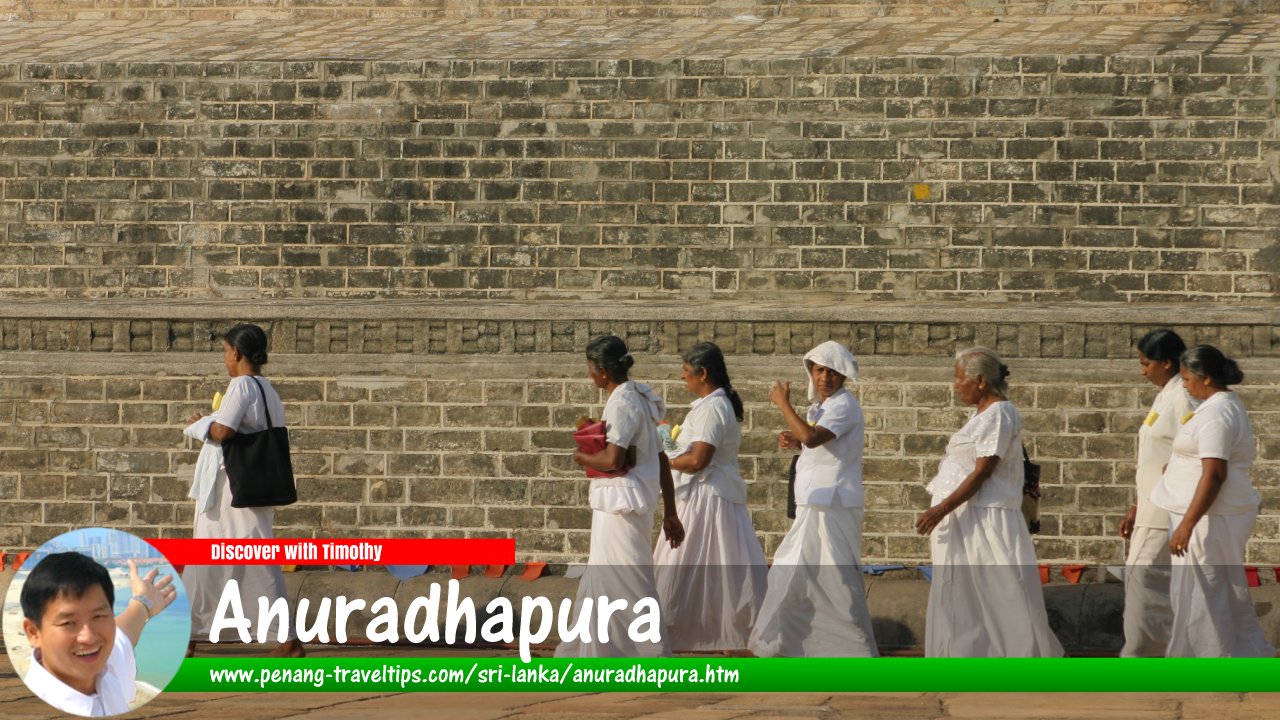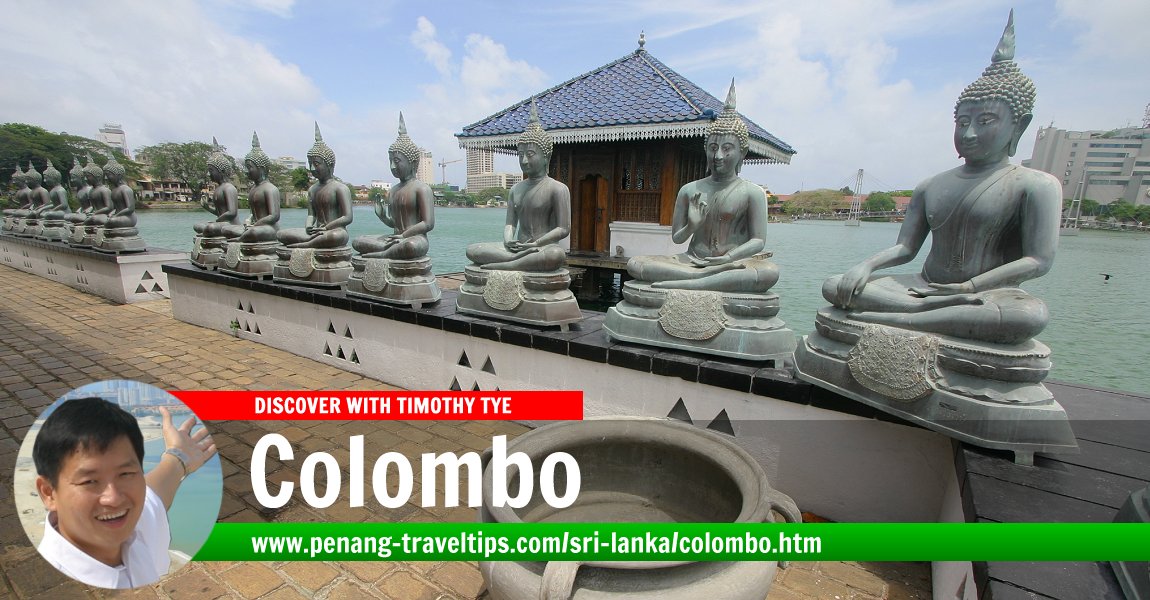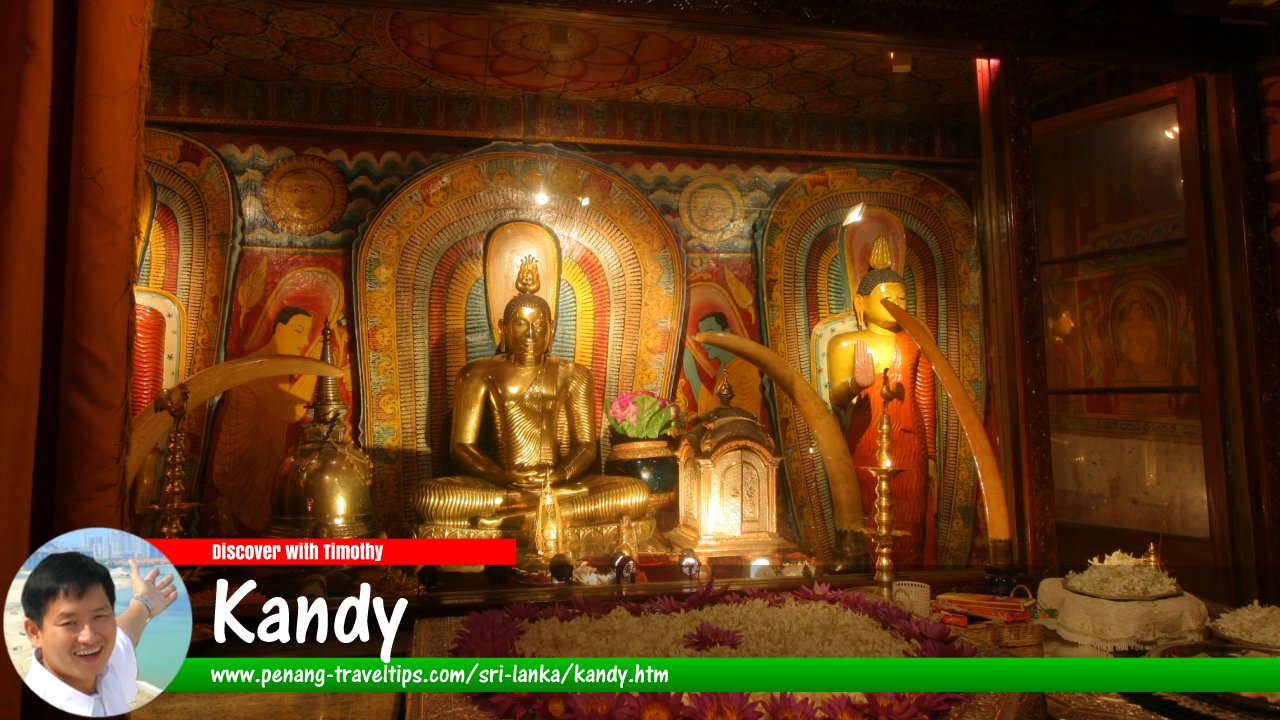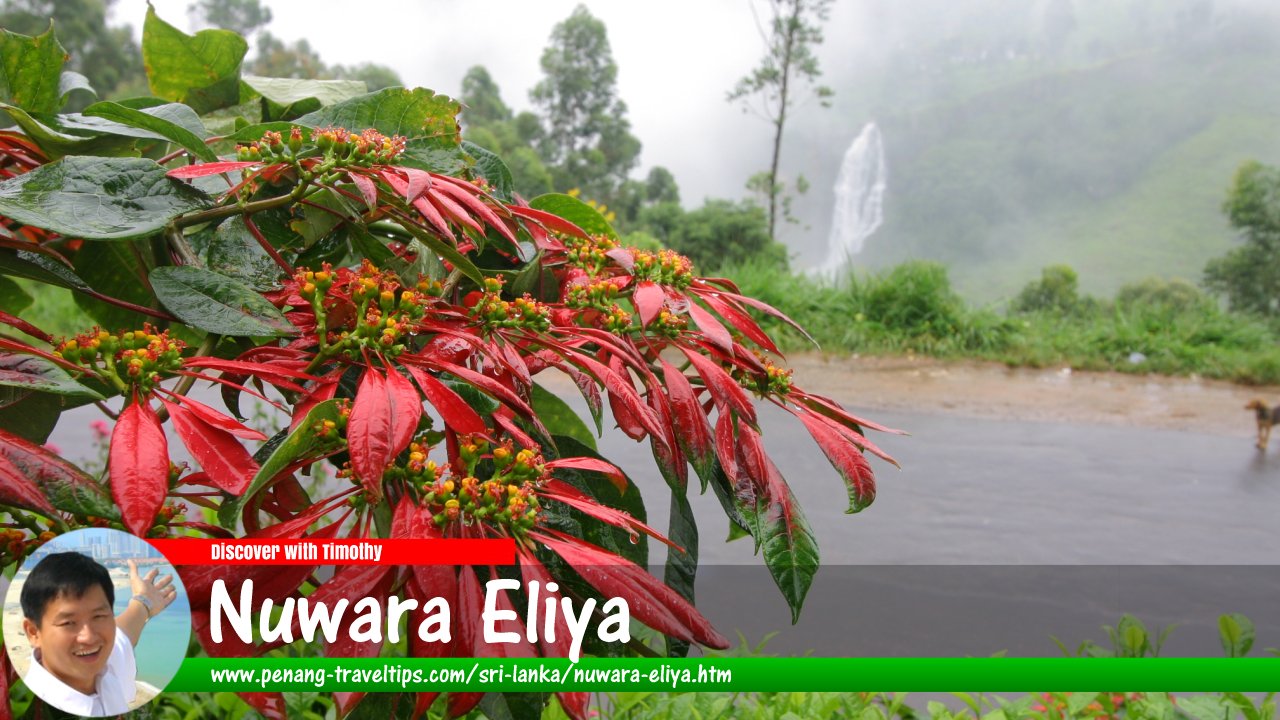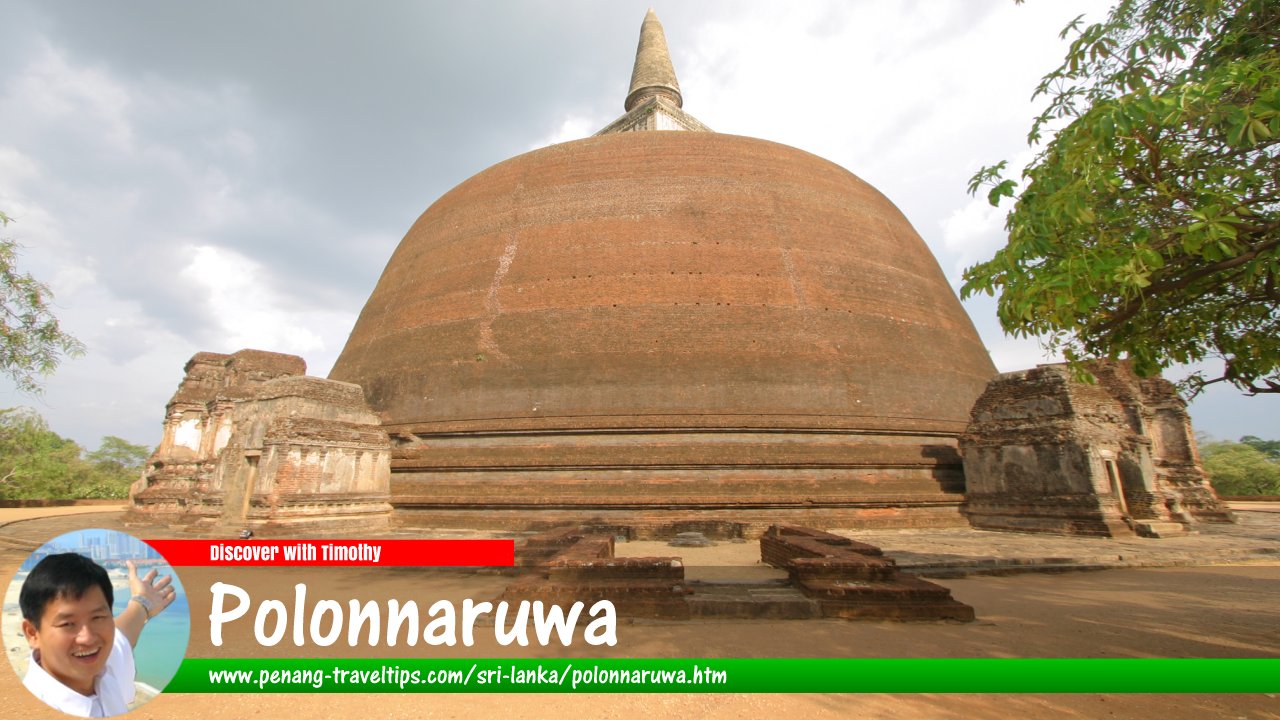

Abhayagiri Vihara, Anuradhapura
 Go Back - Latest Anuradhapura > Sri Lanka > Asia > World | YouTube : Facebook | About Me : Contact Me
Go Back - Latest Anuradhapura > Sri Lanka > Asia > World | YouTube : Facebook | About Me : Contact Me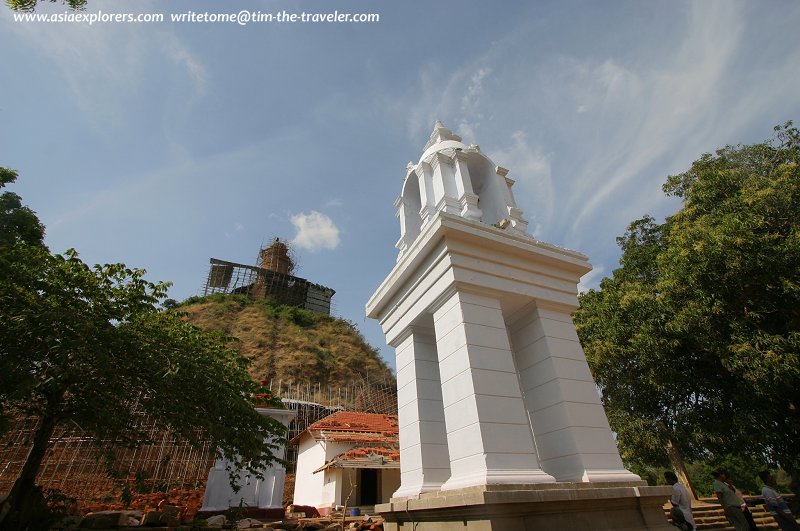 Abhayagiri Vihara (29 August, 2005)
Abhayagiri Vihara (29 August, 2005)
Abhayagiri Vihara is the ruins of a monastery on the northern part of the ancient city of Anuradhapura. It was formerly known as Uttaravihara, or Northern Monastery, during the ancient times. Usually known simply as Abhayagiri, the monastery grew to almost became a city of its own rivalling Anuradhapura.
Abhayagiri Vihara is one of the eight sacred sites for Buddhists in Anuradhapura, Sri Lanka. For about 600 years, it was the largest monastery in Sri Lanka, housing 5000 monks on its grounds which covered over 500 acres (235 hectares). The focal point of the Abhayagiri Vihara is the Abhayagiri Dagoba and the Ratna Prasada, or chapter house of the Dhammaruci Order.
The Abhayagiri Dagoba is the second biggest brick structure in the world after the Jetavana Dagoba. It was built by King Gajabahu (114-136AD) and reaches a height of 370 feet (115m).
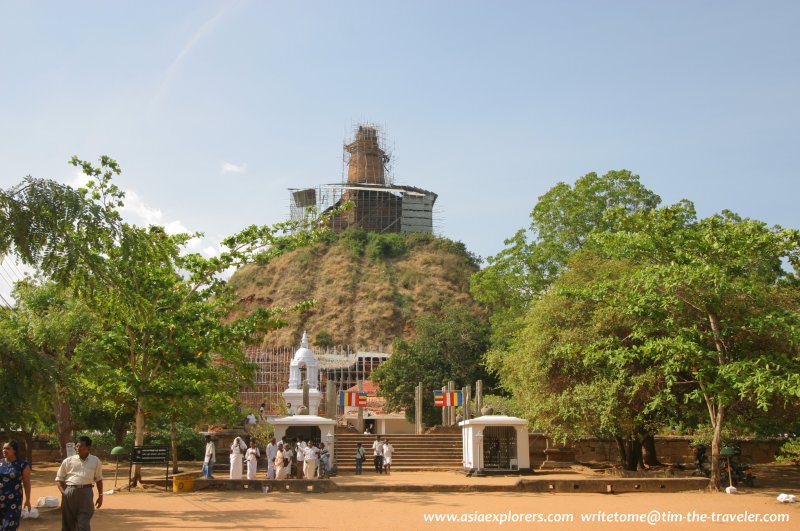 Abhayagiri Dagoba (30 August, 2005)
Abhayagiri Dagoba (30 August, 2005)
According to local belief, the Abhayagiri Dagoba was built over the footprint of the Buddha. The Buddha is said to have come to Lanka and by his supernatural powers placed one foot in the north of Anuradhapura with the other on top of Adam's Peak.
Within the Abhayagiri complex is the Samadhi Buddha, which depicts the Buddha in the serene state of samadhi, or deep meditation. A little further north are the twin ponds or Kuttam Pokuna. Beyond the Samadhi Buddha is one of the most outstanding moonstone in Anuradhapura. This moonstone located at the threshold of the queen's pavilion of King Mahasen's Palace.
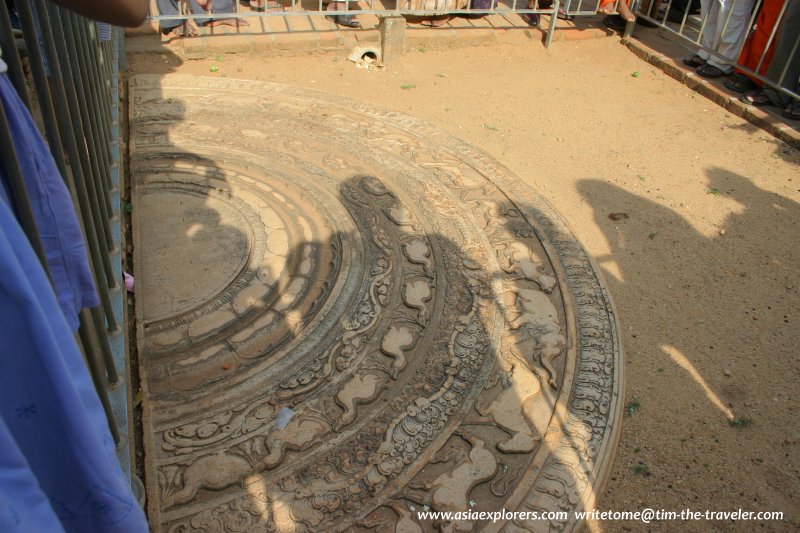 A moonstone at the Abhayagiri Vihara (29 August, 2005)
A moonstone at the Abhayagiri Vihara (29 August, 2005)
Moonstones
Moonstones are a carved piece of stone at the entrance to Sri Lankan temples. They act like stone doormats to reflect cosmic symbolism. The outside ring depicts a flame, symbolising desire. The next right is a frieze of animals symbolising vitality. They walk from left to right, the direction of good omen. The Anuradhapura moonstones include bull, horse, elephant and lion, whereas those found in Polonnaruwa, which is later than Anuradhapura, omits the bull out of respect for Hindus.After the animals are twisting creepers. They represent the life force. According to Buddhism, once you are able to overcome craving, you can choose good over evil. The next stage, symbolising the search for the truth, is represented by the goose, or Hamsa. Next is a scroll of ornamental lotus flowers, the symbol of purity, and finally in the middle, is plainness, symbolising Nirvana, or enlightenment.
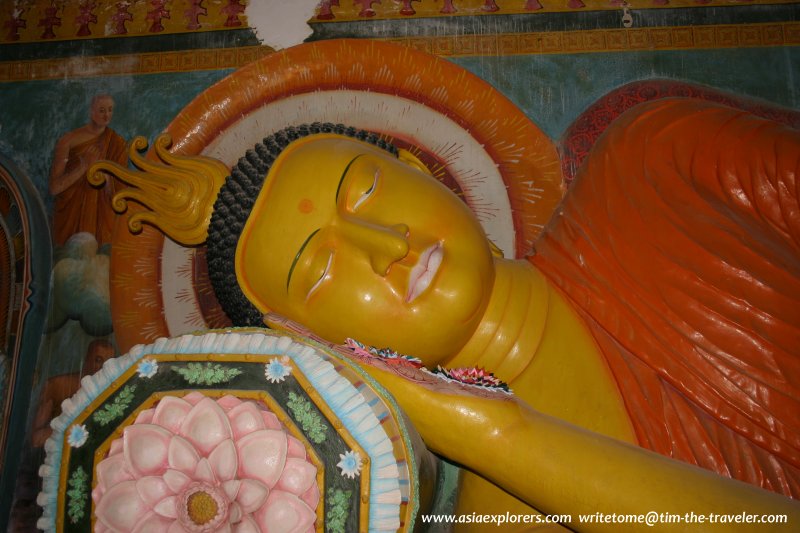 A reclining Buddha at the Abhayagiri Vihara (29 August, 2005)
A reclining Buddha at the Abhayagiri Vihara (29 August, 2005)
 Latest updates on Penang Travel Tips
Latest updates on Penang Travel Tips
 Discover with Timothy YouTube Channel
Discover with Timothy YouTube Channel
 PG Food Channel
PG Food Channel
 Learn Penang Hokkien YouTube Channel
Learn Penang Hokkien YouTube Channel
 SojiMart Videos
SojiMart Videos
 Destination Sri Lanka
Destination Sri Lanka
Major Tourist Attractions of Sri Lanka
Latest from Discover with Timothy: Gurney Bay - what to see and do there
About this website

Hello and thanks for reading this page. My name is Timothy and my hobby is in describing places so that I can share the information with the general public. My website has become the go to site for a lot of people including students, teachers, journalists, etc. whenever they seek information on places, particularly those in Malaysia and Singapore. I have been doing this since 5 January 2003, for over twenty years already. You can read about me at Discover Timothy. By now I have compiled information on thousands of places, mostly in Peninsular Malaysia and Singapore, and I continue to add more almost every day. My goal is to describe every street in every town in Malaysia and Singapore.
Robbie's Roadmap
- Episode 1: Robbie's Journey to Financial Freedom
- Episode 2: Lost in America
- Episode 3: The Value of Money
- Episode 4: The Mentor
- Episode 5: The Thing that Makes Money
- Episode 6: The walk with a Billionaire
- Episode 7: The Financial Freedom Awakening
- Episode 8: Meet Mr Washington
- Episode 9: The Pizzeria Incident
Copyright © 2003-2024 Timothy Tye. All Rights Reserved.
